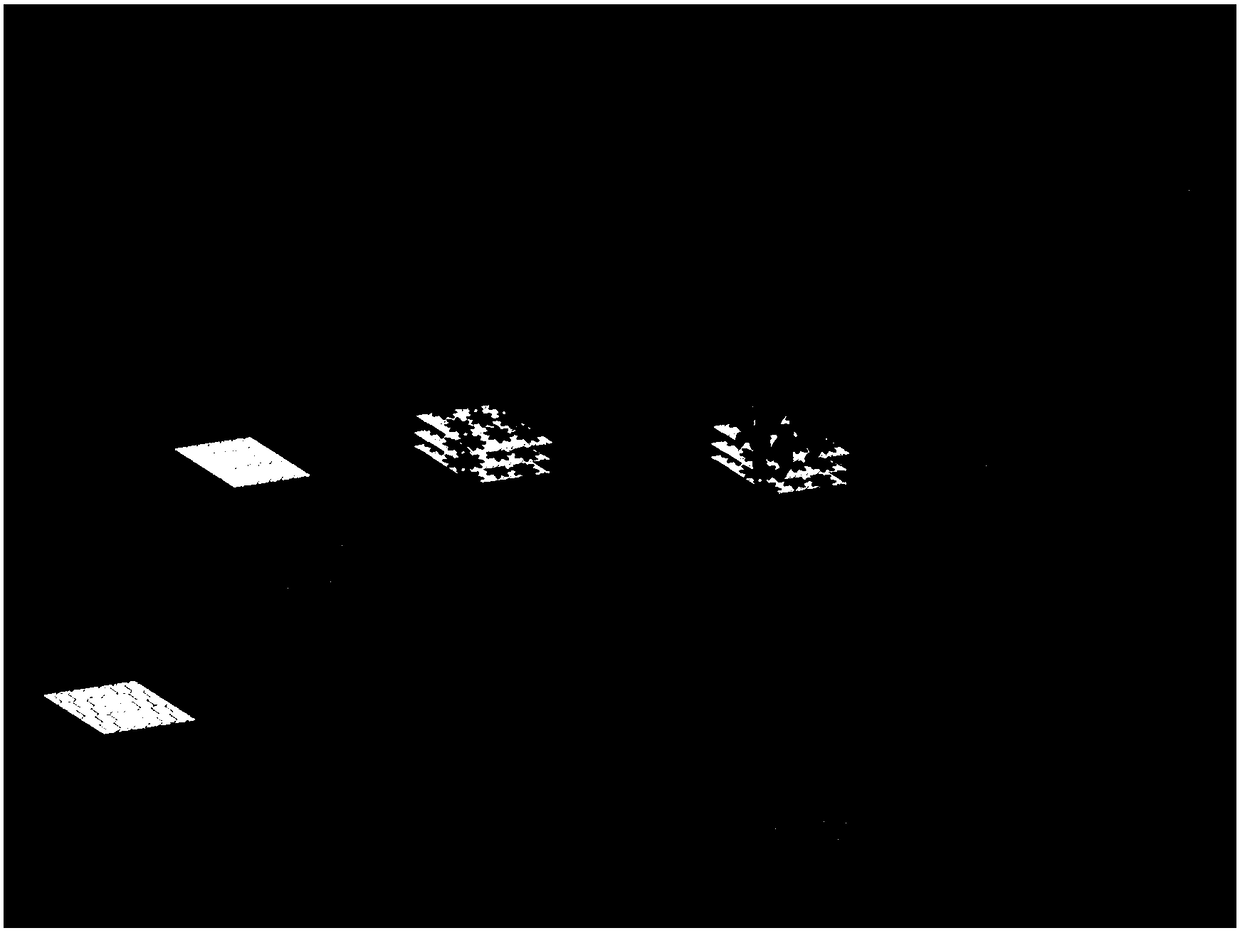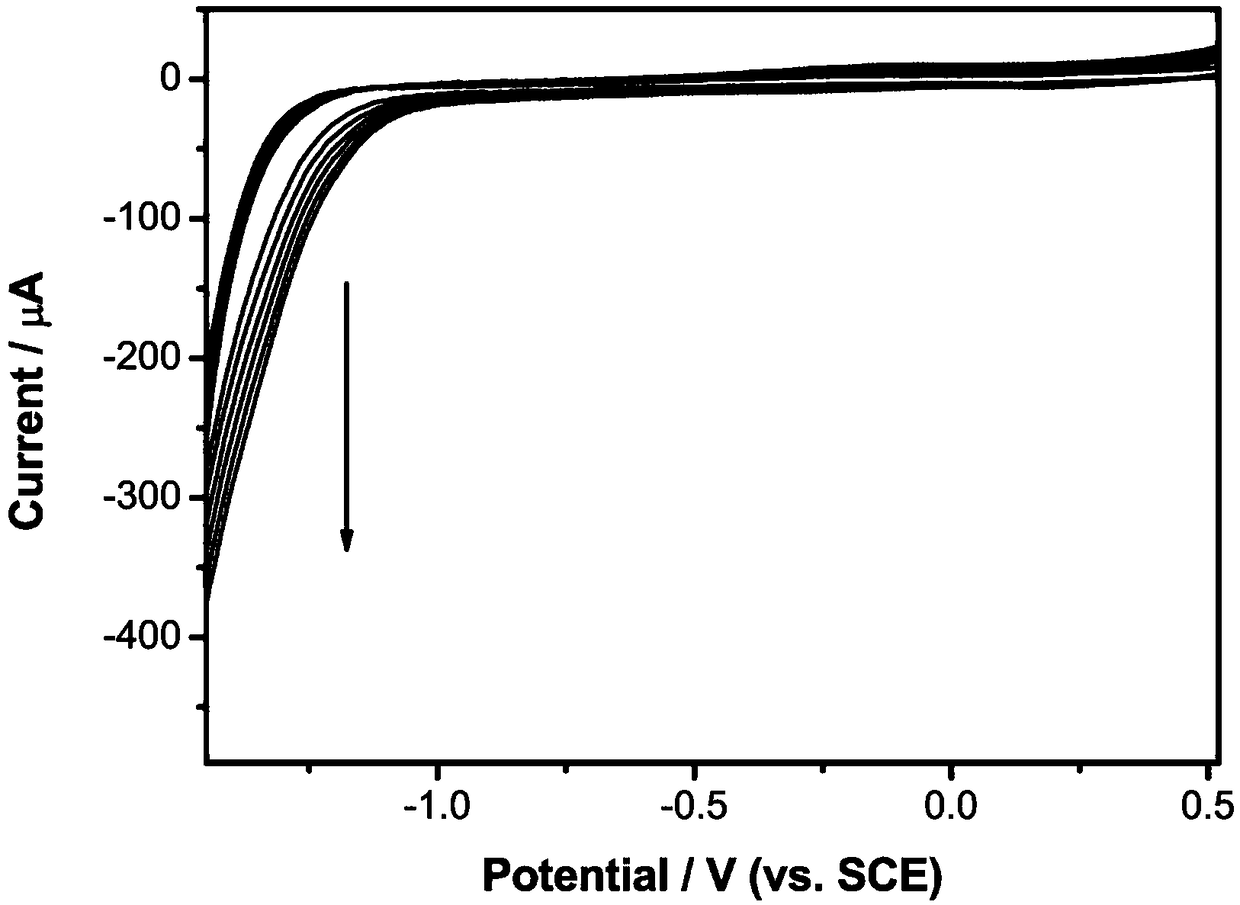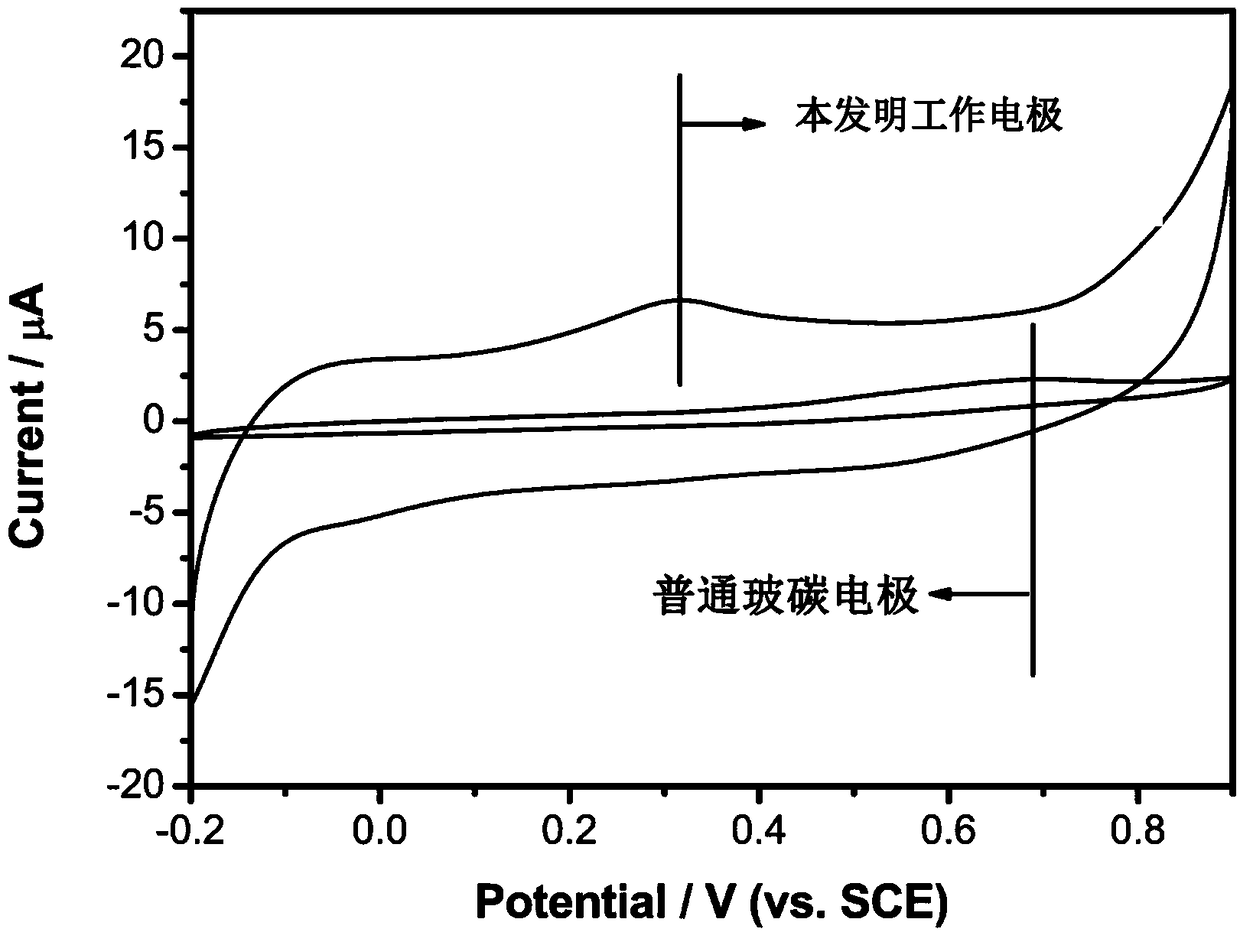Electrochemical biosensor for detecting α-ketoglutarate, preparation method and application thereof
A biosensor, ketoglutaric acid technology, applied in the field of electrochemical detection, can solve the problems of large error, high detection cost, and long time consumption, and achieve the effect of low detection limit, good repeatability, and high sensitivity
- Summary
- Abstract
- Description
- Claims
- Application Information
AI Technical Summary
Problems solved by technology
Method used
Image
Examples
Embodiment 1
[0024] Embodiment 1 Construction of working electrode
[0025] 1. Preparation of graphene oxide and chloroauric acid mixed electrolyte
[0026] (1) Graphene oxide dispersion: Take 10 mg of graphene oxide powder (purchased from Suzhou Hengqiu Graphene Technology Co., Ltd.), add it to 10 mL of deionized water, crush it with an ultrasonic crusher for 20 minutes, and prepare 1 mg / mL of graphene oxide powder. Graphene dispersion.
[0027] (2) Chlorauric acid solution: Dissolve 412 mg of chloroauric acid in 10 mL of deionized water to prepare a 0.01 M chloroauric acid solution.
[0028] (3) Graphene oxide and chloroauric acid mixed electrolyte: take 200 μL of the chloroauric acid solution prepared in (2) and dissolve it in the graphene oxide dispersion prepared in (1) to obtain a mixed electrolyte.
[0029] 2. Fixed gold nano-graphene composite film
[0030] Polish the glassy carbon electrode with alumina powder with a particle size of 0.3 μm until the electrode surface becomes a...
Embodiment 2
[0036] Example 2 Electrochemical biosensor for detecting α-ketoglutarate
[0037] The electrochemical biosensor used to detect α-ketoglutarate is a classic three-electrode system sensor, including the working electrode, counter electrode and reference electrode prepared in Example 1, the platinum wire electrode as the counter electrode, and the calomel electrode as the counter electrode. Reference electrode.
Embodiment 3
[0038] Example 3 Detection of NADH by an electrochemical biosensor for detecting α-ketoglutarate
[0039] All three electrodes of the sensor in Example 2 were placed in a phosphate buffer solution of pH 7.2 and 0.1 M, and the applied potential was 0.3 volts by chronoamperometry, and 4.5 mM NADH solution was added dropwise to the phosphate buffer solution, every The interval between drops is 100s, and the current-time response curve is obtained, such as Figure 4 . Take the NADH concentration as the abscissa, and the corresponding current as the ordinate, and you can get the scattered points Figure 5 After linear fitting analysis, it can be seen that the linear range of the sensor for NADH detection in Example 2 is 31.9 μM-1.09 mM, and the detection limit is 2 μM, indicating that the sensor has a very high sensitivity.
[0040] In addition, compare the cyclic voltammograms of the working electrode prepared in Example 1 (the working electrode of the present invention) and the...
PUM
| Property | Measurement | Unit |
|---|---|---|
| concentration | aaaaa | aaaaa |
| volume | aaaaa | aaaaa |
Abstract
Description
Claims
Application Information
 Login to View More
Login to View More - R&D
- Intellectual Property
- Life Sciences
- Materials
- Tech Scout
- Unparalleled Data Quality
- Higher Quality Content
- 60% Fewer Hallucinations
Browse by: Latest US Patents, China's latest patents, Technical Efficacy Thesaurus, Application Domain, Technology Topic, Popular Technical Reports.
© 2025 PatSnap. All rights reserved.Legal|Privacy policy|Modern Slavery Act Transparency Statement|Sitemap|About US| Contact US: help@patsnap.com



